An exploration of how our minds and emotions affect our sleep, and how the wisdom and practices from the Yoga Tradition might just help.
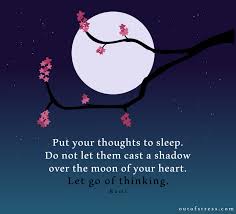
It is very normal to have difficulty getting to sleep or staying asleep when you feel anxious. It is also very normal to react to problems sleeping with anxiety. You have a bad night, and added to the tiredness you feel, you are now worried about how well you will cope with the demands of the day. If your schedule involves an important meeting, an exam, a deadline, a long drive, the demands of a young family, then the anxiety ramps up even more. That first night of poor sleep may have had an obvious cause, like a car with a noisy exhaust going past your house, a twinge of back pain, or a worry. Ordinarily your body will return to its usual sleep pattern as soon as it is able to, but often the next night is affected by the anxiety about whether or not you will have a good night. This sleep/panic cycle gets activated very easily and can lead to long term sleep deprivation. Our bodies are designed for sleep to come effortlessly but sleep is an involuntary process – we cannot FORCE ourselves to sleep any more than we can choose to stop breathing. So taking a combative or hostile stance to sleep problems is unlikely to work. (Think of it like trying to get a closer look at a beautiful butterfly: running around the garden with a net just makes them fly away, but if you sit quietly near the flowers, one might just settle nearby). A short period of insomnia usually corrects itself fairly quickly but if you have suffered from unrestful sleep for many years you will need to call deeply on your patience whilst you work out how to dismantle the sleep/panic cycle and what you may find beneath it. Your difficulties sleeping are being perpetuated by your mind, and this is where the Yoga Tradition and its sister discipline Ayurvedic Medicine may be able to help.
Gut reaction
Ayurveda, the healing science, works on the premise that the origin of all disease lies in your digestion, and they are not talking just about food. Digestion is seen in terms of physical, mental, and emotional – the process of extracting what is helpful and eliminating what is indigestible. Mental indigestion is the inability to let go of a certain incident or thought usually one associated with an unpleasant experience. Emotional indigestion is the recurrence of a feeling, often sadness or anger, long after the event itself has passed: the emotion has not been sufficiently ‘digested’ and remains in our subconscious, from which it can surface unexpectedly at any moment. In Ayurveda it is understood that mental and emotional indigestion are the most common causes of insomnia and the grinding of teeth in sleep is seen as an attempt to chew and digest recurring thoughts and emotions. Anxiety, worry, depression, unpleasant memories, and fears are common cause of sleeplessness, and these are all “in your mind” rather than being something external and tangible. If the problem is coming from the mind then the remedy is located in the same place. The solution is to allow the mind to stop clinging to unserttling thoughts and emotions and to come to rest. So how on earth do we do this?
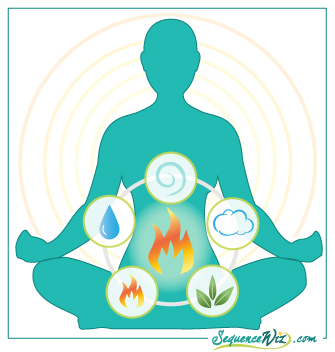
Witness protection
Yoga philosophy teaches us about a profound serenity that exists underneath the turmoil of the mind and suggests that what stops us accessing this peaceful territory is our ego. In yoga the ego is explained as that part of the psyche that seeks to compare, to judge and to catastrophise. When you cannot sleep, the ego unleashes all of the drama connected with what MIGHT happen the next day, none of which is helpful. The physical practice of yoga when approached without force or comparison or unkindness helps you ‘efface’ the ego (move it out of the way). Through a combination of physical posture work, breath awareness and relaxation you learn how to connect to the calm witness within you that can observe without judgment. This ‘witnessing awareness’ is there whether you are awake or asleep. The witness can watch the ego trying to control everything, then freaking out because it can’t, then collapsing in a sobbing heap with frustration, a cycle that it thrashes through again and again while you lie in helpless wakeful tiredness in your bed. When you can move from worrier to witness, suddenly you have a choice. What will you do with this time? Now this may seem like the most ludicrous question you have ever heard! But -you are awake, so what ARE you going to do with this time? Moments of quiet are rare, and they serve a purpose. In these unwelcome wakeful moments you may begin to gain some insight into why you can’t sleep. If your sleep is being interrupted regularly, it may be trying to convey a message and this might be physical, psychological or spiritual in nature. The physical messages are the easiest to interpret: a full bladder or an aching back can easily be remedied by a trip to the loo and a shift in position. Psychological and spiritual issues are thornier – a signal that you need to prioritise time to process your feelings and experiences. For many people, the moment they settle into bed, despite feeling physically and mentally exhausted with heavy eyelids, their mind starts churning, and there is so much activity going on that they cannot get to sleep. If you can, in that moment, stop, take a breath, and step away from your panic about being awake, so that you can take the vantage point of the witness. I think of my inner witness like an umpire at a tennis match: impartial and watching everything. It gives you that little bit of space to WITNESS the churning of the mind without getting swept away by it. Remember, yoga is about a lot more than than having a flexible body, in fact I would go as far as to say the physical aspect is the LEAST important part of this ancient discipline (and the most modern component of it, but that’s a story for another day…) What yoga is teaching us, is to become aware of ourselves as a multi-dimensional and inter-connected being. We are learning to inhabit the present moment and to move away from the need to edit anything out, or add anything in.
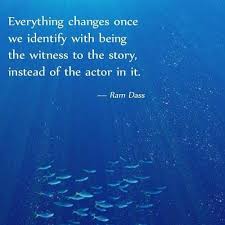
The twilight zone
At the end of a yoga class you are invited to lie on the floor to do nothing and this is called Savasana (pronounced sha-VAA-su-na) meaning ‘pose of a corpse’. The translation gives you a clue. It is about being still and doing nothing. The teacher may take you through a guided relaxation or play soothing music, or this last past of the class takes place in silence. Some students look forward to this bit the most, and their eyes will be sliding round to the clock to see if it’s time to get their blanket out. Others dread this bit and will either lie there with arms folded, ankles crossed, body tense, counting the seconds til they can escape, and the real hard-core savasana-averse make an excuse and leave before it starts. After an hour or more of posture work when you have been twisting, stretching, balancing, trying to remember to breathe and to stay focused, most people are quite happy to lie down and have a little rest, but it is more than that. You are allowing the body and the mind to drift towards the first phases of sleep when you are still ‘awake’ but slightly less responsive. It is like an emotional twilight, the phase between light and dark which is neither fully awake nor fully asleep. Often you will be aware of the teacher talking you through a relaxation but not be able to recall what was said. Sometimes you will actually fall asleep and the class is usually serenaded by at least one person “purring”. To help you understand the importance of savasana, think of your physical yoga practice as the equivalent of you creating your own natural medicine, the perfect antidote to all of your ills, and your savasana as the time that you take the remedy. The teacher is guiding you towards that ‘twilight’ place, as this is a place of deep REST. And rest is something that most of us are short of.
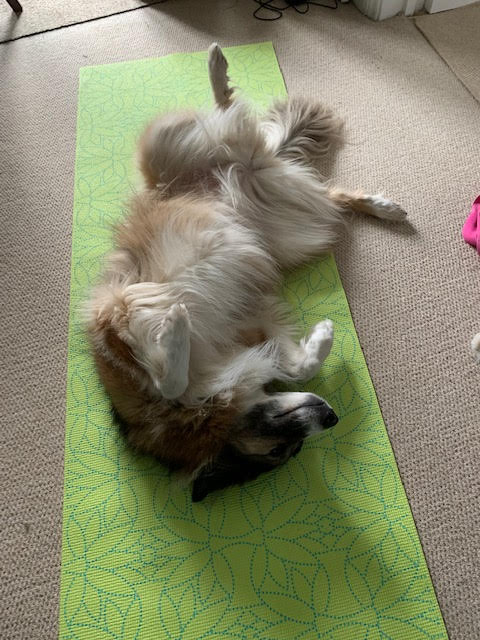
Rest is best
Resting means doing nothing whilst awake, not watching TV not reading not listening to a podcast, perhaps not even meditating, just getting comfortable and doing nothing. Rest often does lead to sleep, but even when it doesn’t it can be deeply replenishing. And ‘doing nothing’ is not a popular notion in our culture which is very results driven. We get so much satisfaction from ticking everything off our to-do list, even if in doing so we have worn ourselves down to the bone. If our efforts can’t be seen in the results, then were they a waste of time and energy? Think for a moment, if you have ever had to research a topic in depth. How much of your research actually ended up in the finished piece? Though you may look with depair at all the material on the cutting room floor, perhaps because of a time limit for a presentation or a word limit on a written piece, often the material that didn’t make the final cut was key to your understanding and may well have given rise to some breakthrough moments. In the same way we tend to think of rest as a waste of time when we have so much to bloody DO! Perhaps we could think of rest as the ‘research necessary for sleep’….would that give it more value? Maybe each day we need to write a “To-Don’t list” that requires that we take some time out just to chill. One of the best times to do this is at one of the natural junctions in your day. This may be mid-morning when you have the baby down for a nap and the laundry underway. This may be in your lunch-break from work, or at clocking off time. It may become part of your bedtime routine. But to make this new regime stick you need to schedule it in and practice resting regularly.
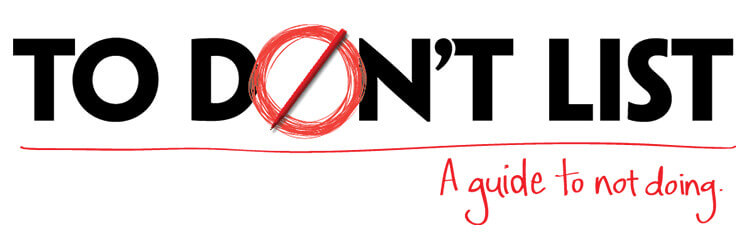
Still Life
It is surprisingly challenging to be physically still and allow the mind to free-wheel wherever it wants to go without tryng to control it: the equivalent of letting a dog off the lead for a good old run at it’s own pace. If you compare a dog trotting obediently beside its human companion on a lead along the pavement, to a dog crashing through the undergrowth in pursuit of a rabbit, you can guess which one is the more satisfying. Back in the days when women were expected to wear corsets to control their luscious curves, that moment at the end of the day when they could loosen their stays must have been a huge relief. We all need such a moment mentally, to free the mind and let the breath come easy. I think that one of the key reasons people avoid doing nothing is a fear of where the mind might go. What if it goes somewhere scary or sad or depressing? The reality is if we are scared, or sad, or angry, or overwhelmed, that state already exists within us. Refusing to allow the mind to go there is just another form of corsetry, it doesn’t make those places in the psyche go away, it just stifles them temporarily. This is where the ‘witnessing awareness’ that you learn in yoga comes to your aid. If the movements of the mind are like the strong currents in the ocean, your witnessing awareness is your life boat that keeps you above the water and safe from harm. Let me give you an example. Often I find myself turning over in my mind the way a particular relationship ended, and obsessing about some detail (usually a perceived injustice or hurt). Instead of disappearing down this ‘thought rabbit hole” like a demented Jack Russell Terrier, I can now (usually) observe what is happening: “I see my mind is reliving the argument that I had with (insert name). That’s Ok my mind can look through all of that again if it needs to but “I” don’t need to get swept away by that memory.” Sometimes I say out loud “my little boat will prevent me getting swept away.” What you might be surprised to find is when you operate from this perspective, the mind gets bored quite quickly and switches to think about something else. I wonder sometimes if in surpressing these unwelcome or painful thoughts we are just trying to submerge them, and the minute we stop exerting the effort to keep them down they pop up again. The image that comes to my mind is trying to hold a large inflatable beach ball under water. You know the minute you let go it will ROCKET up above the surface, whereas if you just left it to bob about it develops no such power. So why is all this witnessing of the thoughts so important? Because it is giving your brain time to download and sift through all of your thoughts and feelings, and if the only time it gets to do this is when you go to bed, you are unlikley to be able to get to sleep.

Dear Diary
One of the simplest ways to help the brain “digest” is to write it down. There is research to prove that physically writing things down on paper with a pen or pencil is more effective than typing on a device. Writing things down the ‘old-fashioned’ way improves both the retention and recall of memories. It also promotes brevity, as most of us will type a lot more than we could be bothered to write! This brevity is important as it prevents us from getting drawn deeply into recalling and reliving painful emotions, and promotes the ‘witnessing awareness.’ To finish the day by writing a brief entry in a journal, and creating lists for the next day can really help your brain off load and be ready to power down. Categorising your to-do list also helps you notice if you are planning a balanced day that contains enough self-care, stewardship (looking after the world) creativity, rest, and social contact and not just chores and work. Here is an example from my own journal:
“Quite a productive day, energy levels good and mood stable. Got the repairs done on the outhouse and made a batch of tea bread and a casserole which pleased me as I know that feeding myself well is a form of self-care that I need to practice. (Ditch dumpling recipe – soggy clumps). Had recurring worry about (name) anxious that I have offended them in some way and they are angry with me. This is now outside of my control. I do not know what they think or feel nor can I unless they choose to tell me. Breathe. Didn’t go for my walk today as knee sore so put feet up instead. This self-care lark is quite hard to schedule but I feel SO much better for it.
Tomorrow:
finish editing sleep article (work)
wash hair (self-care)
soak chick peas to make houmous (self-care/creative)
yoga practice (self-care/work/creative)
walk with (name) (social contact)
clean hallway floor (chores)
level off second veg patch (stewardship/chore)
clean bird baths (stewardship/chore)
give myself a manicure (self-care)
make collage (creative)
I write my journal in bed and leave it, and some scrap paper beside my bed, so that if I have trouble settling and thoughts pop up I can jot things down on my list or off-load thoughts into my journal. Give it a go. And the good news is, you don’t ever need to re-read it, just get it out of your head and onto the paper. (Remember though, every sheet of paper started life as a tree. I cut up and keep every envelope that comes through my door so I always have plenty of paper for lists. My journal is made from all the printer paper that was printed on one side held together with a bull-dog clip. Reduce! Reuse! Recycle folks!)
Sweet Dreams are made of…..YOGA
The yoga tradition is FULL of techniques to help you get restful sleep. Here is a quick guide.
Shake your asana
Focus on floor work, long holds, restorative poses and symmetry (i.e. poses where both sides of your body are doing the same thing at the same time like wide legged seated forward fold – Upavistha Konasana). Simple twists followed by forward folds work well and avoid backbends near bedtime (other than Bridge pose) as they can be too energising. Focus on a slow practice using your awareness of your breath as an anchor for your mind.
Sigh of relief
Once you are in bed and sleep would be welcome focus on your breathing, let it flow smoothly, slowly, and evenly. This simple exercise tells your mind and body that it is OK to stop thinking, working, and struggling. Without tensing or gripping, begin by simply slowing down your breath by lengthening each exhale slightly. Staying relaxed is key; only increase the duration of each exhale as much as you can whilst staying relaxed. Visualize yourself leaning into the exhale as you release any thoughts or stress and relax into your bed. Continue for as long as feels comfortable.
Half asleep
Yoga nidra, often translated as “yogic sleep,” can help loosen insomnia’s hold. You start by setting an intention (why am I doing this) and checking in with your deeper intentions for life (where am I going and am I on track?) Then, focus on feelings and associations that make you feel safe and content. Once you feel secure, begin to explore sensation in your body and foster awareness of your breath without the need to ‘fix’ anything. Once you are in bed, lie on your back, legs bent with a pillow behind your knees, arms relaxed by your sides, palms up and hands soft and start to run a ‘Body Scan’ This simply means directing your attention to each part of your body in turn, starting at the scalp and working your way down to your toes. Close your eyes as you work down the body becoming aware of any sensation coming from that part of the body, be that pleasant or unpleasant, welcome or unwelcome, allowing each area to soften and become heavier and easier. You might need to first tense the muscles before you can release them, for example by clenching a fist then relaxing your hand if this helps you. This practice leads the body and mind into a deep state of relaxation. This is when various emotions, thoughts and beliefs start to come up, often things that you had no idea were on your mind, perhaps experiences or emotions that you’ve not had the chance to deal with, or found too overwhelming to process. But now you will be able to welcome and respond to them all from your vantage point of the ‘witness’ and with a deep, underlying sense of ease. This process often brings to light new understanding and the resolution of internal conflict. It allows you to see yourself as open, expansive, unbound and unlimited
Positive vibes
Positive visualisation techniques can be very useful to get you back into a healthy sleep pattern. One of my favourites is to replay the day and comb through it for EVERY single positive thing that happened and make a ‘collage’ in my mind of snapshots of all the good things that I may have missed in the flow of a busy day. This also promotes the feeling of security that helps us relax and fall asleep. There are lots of free guided visualisations you can download and listen to on your headphones, and these are loaded with triggers to promote the relaxation response. It is a form of self-hypnosis and you will probably struggle to stay awake right to the end. I love them, and always end up trying to listen to them again to find out what happens, and I always fall asleep in the same place.
And so to bed…
I hope this series of articles have been helpful to those of you who are not sleeping as well as you would like to be. The bottom line is that though sleep is vital to your health and vitality, insomnia is not life threatening. So turn your alarm clock to the wall and interrupt the internal dialogue about how you are going to get through tomorrow on no sleep. The key to sound sleep lies in surrendering, not in trying harder. Sleep cannot be forced, but it can be coaxed. It is waiting for you. Allow yourself to come to it, sink into it , the world will carry on turning without you for a while…..

Please note, taking up yoga and meditation can help break the sleep/panic cycle but may not be enough if you have experienced trauma in the past or if your sleep problems are of long duration. Schedule a consultation with your G.P to check for underlying health conditions such as Sleep Apnoea or Circadian Rhythm Disorder and consider going into therapy with a skilled counsellor to help resolve emotional trauma . Cognitive Behavioural Therapy (C.B.T ) has also proven very helpful in establishing positive sleep patterns.
